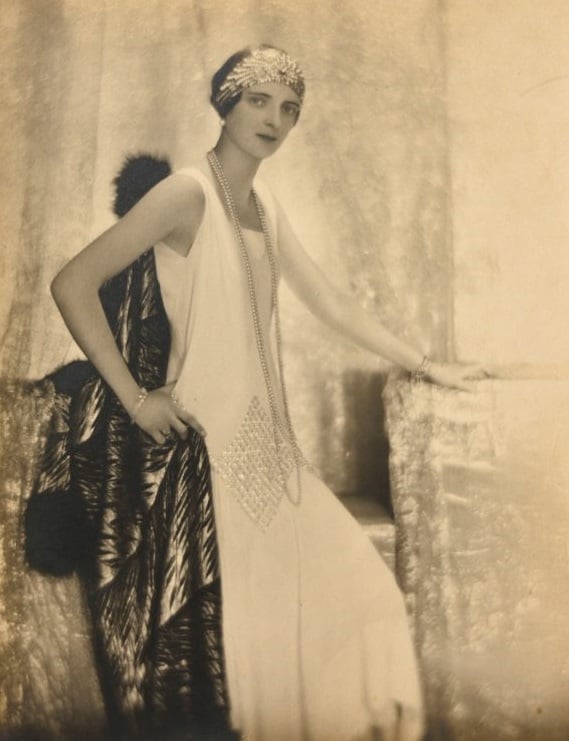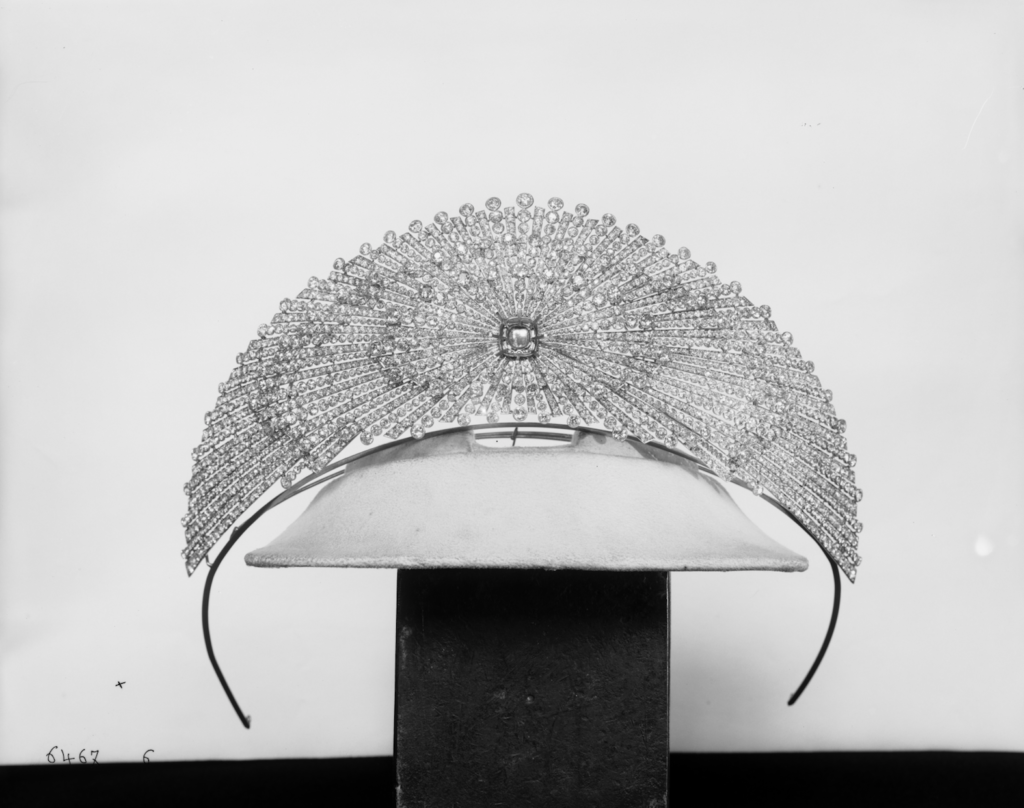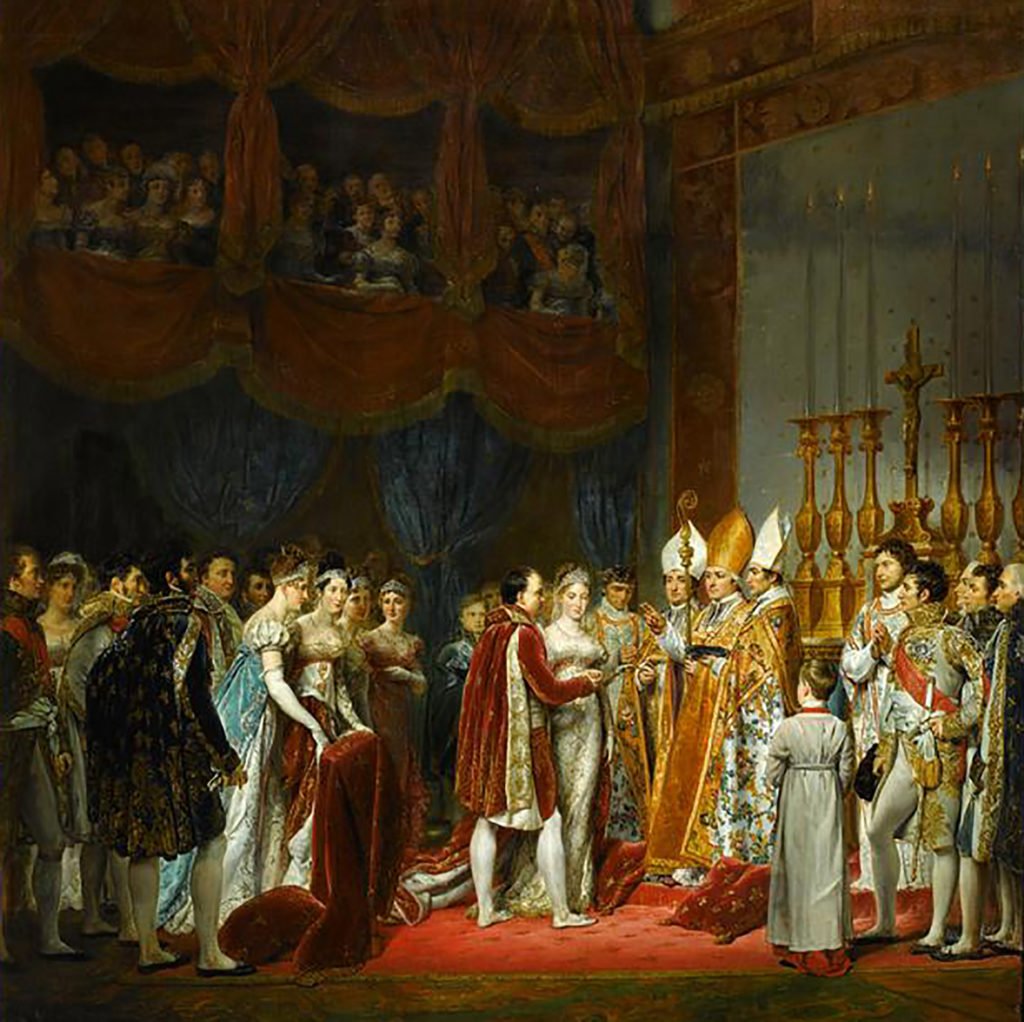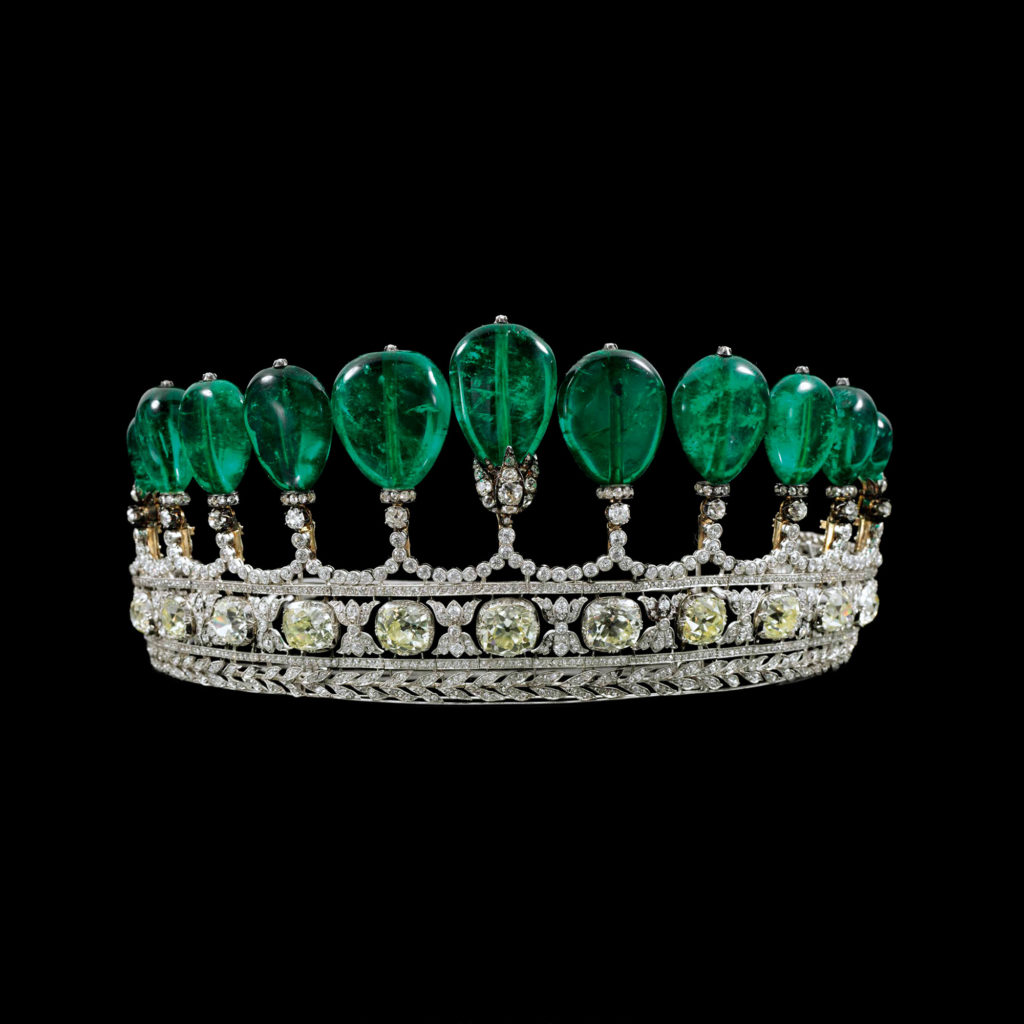Art World
In Monaco, an Exhibition of Chaumet’s Historic Jewels Weaves a Tale of Powerful Women, Royal Intrigue, and Unsolved Mystery
“Chaumet in Majesty: Jewels of Sovereigns Since 1780” examines jewelry’s role in the power games of the past.

“Chaumet in Majesty: Jewels of Sovereigns Since 1780” examines jewelry’s role in the power games of the past.

Nazanin Lankarani

This summer, over two centuries of regal extravagance are on display in the subterranean halls of Monaco’s Grimaldi Forum, where tales of love, intrigue, and imperial power are the subject of an exhibition titled “Chaumet in Majesty: Jewels of Sovereigns Since 1780.”
For the show, which opened last month and runs through August 28, Chaumet gathered 250 pieces of jewelry, paintings, and artifacts to tell the fascinating stories behind some of the ornaments that the Parisian house has produced since its founding in 1780, and the sovereigns who owned them.
“The principal focus of the show is women of power and the tiaras they wore as witnesses of their destinies,” said Jean-Marc Mansvelt, chief executive of Chaumet.

A view of the exhibition’s scenography. Photo courtesy Chaumet.
Tiaras are a specialty of Chaumet. Of the 50 splendid examples presented in the show, a few have vanished in the chaotic throes of history, but are brought back to life thanks to faithful reproductions and archival imagery. Others, guarded in private collections until now, are shrouded in mystery. And some were simply remodeled. Whatever their historical trajectory, the tiaras’ restored magnificence is enhanced by the exhibition’s artistic scenography, which plays light against shadow to dramatic effect in the dark, velvet-lined halls of the space.
One of the more spectacular tiaras on view—the legendary “Diadème Soleil,” or “Sun Tiara”—once belonged to Princess Irina Alexandrovna Romanova, a relative of Nicholas II, the last czar of Russia, whose family was among the jeweler’s clients in the early 20th century. Princess Irina was married to the scandalously decadent Felix Yusupov, whose exploits included plotting the murder of the court advisor, Rasputin. Before going into exile for that crime, the Yusupovs hid their jewels inside a wall of their home in Moscow, leaving them behind when they fled the country some years later after the Russian Revolution of 1917.

A photo of Princess Yusupov’s Sun Tiara from Chaumet’s archives. Photo courtesy Chaumet.
In 1925, while examining cracks in a wall of the princely Yusupov palace—which the communists had turned into the Museum of Military History—a museum employee stumbled upon the Yusupovs’ treasure trove. A black-and-white photograph, included in the exhibition, shows a group of Soviet experts examining the precious cache, and sheds light on the jewels’ fate: after they were found, they were declared state property, broken up, and sold off.
That is how the Sun Tiara disappeared, its delicate design on view for all to see in a 1914 photograph of the princess before all traces of its former splendor—and the piece itself—were lost. “The very nature of jewelry is such that it is transformable,” said Mansvelt, explaining that historic pieces are often altered or taken apart over time. “It takes a lot of research to determine what a piece of jewelry looked like originally, and what transformations it went through.”

A tiara that once belonged to Princess Hedwige of Bourbon-Parma. Photo courtesy Chaumet.
Much of that research was conducted by Chaumet’s team of curators, royal-history expert Stéphane Bern, and jewelry historian Christophe Vachaudez, who were able to secure loans for the show from 16 museums and some 50 private collections, including that of Prince Albert II of Monaco, the patron of the exhibition.
The show also explores various symbolic uses of the tiara throughout history, including as an instrument of political power by Joséphine and Marie Louise, the successive wives of Napoleon. “Joséphine had made the tiara fashionable, but it also became a tool in the service of the emperor’s political agenda,” Mansvelt said. “It was a symbol of love that became an emblem of the legitimacy of the emperor’s reign.”
A number of paintings in the show also place the jewelry in the context of the epoch, and illustrate Mansvelt’s point. An 1808 painting attributed to the Baron Gérard, for example, depicts Joséphine in her imperial regalia. Another from 1810 by Georges Rouget depicts the marriage ceremony of Napoleon and Marie-Louise, her ladies-in-waiting adorned with tiaras made by Marie-Étienne Nitot, founder of Chaumet. “Imperial protocol required all the ladies to wear tiaras at official ceremonies,” Mansvelt said. “Thanks to the art of the epoch, we can see the design of the jewelry and understand its purpose.”

Georges Rouget, The Religious Marriage of Napoleon I and Marie-Louise in the Salon Carré at the Louvre (1810). Image courtesy Chaumet.
But tiaras are not just relics of the past—many continue to be worn today by members of European aristocratic families. The “Diadème Art Deco,” made in 1926 for the Grand Duchess Charlotte of Luxembourg and on a rare loan from the “Grand Ducal” collection, is a strikingly modern piece. Worn as a headband featuring a stunning 45-carat central emerald, the tiara sits low on the forehead, and is still used today by the Grand Duchess Maria Teresa of Luxembourg.
Other tiaras in the exhibition, meanwhile, have hazy and tortuous backstories that lend them an enigmatic air. The most valuable piece, for instance, was first commissioned around 1900 by Count Guido Henckel von Dennersmarck, a German aristocrat. Its 11 pear-shaped emeralds are believed to have once belonged to Empress Eugenie, the wife of Emperor Napoleon III, who was forced to sell her jewels when she went into exile. Today, the tiara and its mesmerizing emeralds belong to the royal family of Qatar.

Princess Henckel von Donnersmarck’s emerald tiara. Photo courtesy Chaumet.
Jewelry, according to Mansvelt, can reveal so much about society and a woman’s place in it, especially when one examines the records of “who chose the jewels, who ordered them, and who paid for them.” To shed light on the history of each piece, Chaumet has meticulously preserved its records since its founding—“20 tons” of them, Mansvelt said—and plans to digitize them while its flagship boutique on the Place Vendôme is closed for renovation this year. “A digital database can be an invaluable tool to research the history of Chaumet’s designs, and tell us what our clients purchased and how they wore their pieces,” Mansvelt said. “It will open a new chapter in the history of Chaumet.”
“Chaumet in Majesty: Jewels of Sovereigns Since 1780″ is on view through Wednesday, August 28 at the Grimaldi Forum, 10 Avenue Princesse Grace, Monte Carlo, from 10 a.m.–8 p.m. daily.